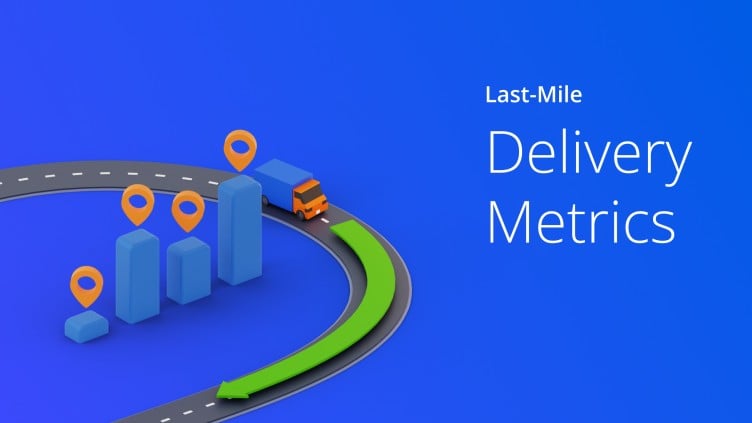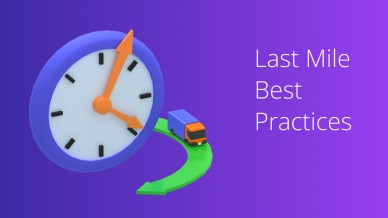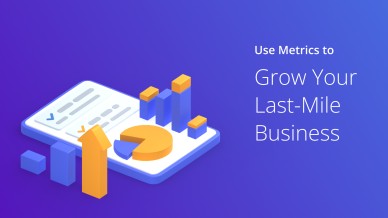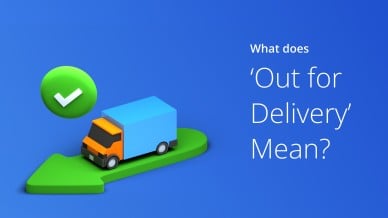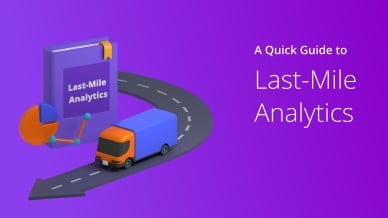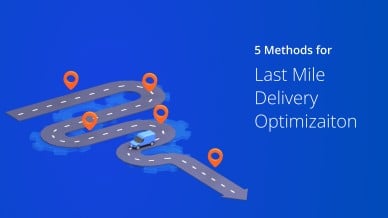Choosing the right last-mile delivery metrics will help you to ensure on-time delivery, reduce expenses, improve accuracy and utilization, and optimize workforce productivity.
Picking the right metrics for last-mile delivery will give you the data you need to analyze and plan strategies for overall logistics operations. The data collected will help you measure the progress and performance of delivery while ensuring you get the parcel to its final destination in the fastest, most efficient manner.
This data is quantifiable and qualitative and is used to set key performance indicators (KPIs) for any last-mile delivery operations. KPI and metrics are used interchangeably to meet specific goals and improve overall business performance.
But what are the most important metrics for last-mile delivery?
Let’s find out.
Table of Contents
Last-Mile Delivery Metrics You Should Track
Below are several metrics for last-mile delivery you can rely on to find out the data you need to monitor progress and improve performance and efficiency.
We have divided the metrics for last-mile delivery into six categories.
1. Operational Metrics
Below are the details of the operational metrics.
- Progress: This refers to the visiting progress of the stops on the route.
- Number of Stops: It refers to the total number of addresses or stops on the route.
Want To See For Yourself How Route4Me Can Make Last-Mile Deliveries Efficient?

2. Vehicle Utilization
Here are the six vehicle utilization metrics you should monitor.
- Cost: You should calculate the cost of visiting and servicing the stops on the route.
- Fuel Cost: This last-mile delivery metric help you track how much fuel is used daily during deliveries to reduce unnecessary expenses accordingly.
- Cube: It refers to the total cubic volume for the route.
- Pieces: You should find the total number of pieces picked up or dropped off on the route.
- Revenue: You must calculate the estimated revenue from the route.
- Weight: You should find the total weight picked up or dropped off on the route.
3. Distance
Here are two distance metrics you must consider.
- Estimated Distance: This refers to the total planned distance for the route.
- Actual Traveled Distance: You should figure out the actual distance your driver has covered on the route at a given point or upon route completion.
4. Time Metrics
Here are the nine time metrics you should consider.
- Estimated Travel Time: This refers to the total planned travel time for the route.
- Actual Travel Time: You should track the actual time traveled by your driver on the route at a given point or upon route completion.
- Wait Time: You should figure out the amount of inactive time spent waiting.
- Stem In: It refers to the time it takes to get from the depot to the first stop on the route.
- Stem Out: This refers to the time it takes to get to the depot from the last stop on the route.
- Time in Traffic: You should figure out the total time a driver spends in traffic.
- Total Service Time: You should determine the estimated time spent servicing all stops on the route. It helps you improve workflow while saving on expenses.
- Actual Time on Site: You should determine the actual time spent servicing all addresses on the route.
- Total Time: This is a crucial metric. You should figure out the estimated total duration of the route.
5. Rates
Below are the two metrics you must consider.
- Cost per Mile: Cost-per-mile metric will give you a good indication of daily expenditure. You can calculate cost per mile by dividing your total route costs by total distance. The costs should include driver salaries, fuel and vehicle expenses, and variable costs such as casual wages and breakdown costs.
- Profit per Mile: This refers to the estimated profit per driving one mile on the route. You can calculate your profit per mile by dividing the total of all per-address/per-stop profits by the total distance.
6. Density
Here are the ten density metrics you should consider.
- Stops per Distance Density: You can calculate stops/distance density by dividing the total number of unique stops on the route by the total distance.
- Stops per Hour Density: You can calculate stops/hour density by dividing the number of unique stops by the total route duration.
- Transactions per Hour Density: You can calculate the transaction/hour density by dividing the total number of orders by the total route duration.
- SPORH: SPORH is an acronym for Stops Per On-Road Hour. It refers to the number of stops per hour a field service employee makes from when they leave the office or warehouse to when they return, not including scheduled breaks. Learn in detail what SPORH is in routing.
- TPORH: It refers to the estimated number of transactions your drivers/field service reps performed per one on-road hour.
- Cubic per Distance Density: You can calculate cubic/stop density by dividing the total cubic volume of all the orders by the total number of stops on the route.
- Pieces per Distance Density: You can calculate the pieces/distance density by dividing the total of all the pieces in all the orders by the total distance of the route.
- Weight per Distance Density: You can calculate the weight/distance density by dividing the total weight of all the orders by the route’s total distance.
- Weight per Stops Density: You can calculate the weight/stop density by driving the total weight of all the items by the total number of stops on the route.
What’s Next?
You know the last-mile delivery metrics you need to track. But how would you fix the issues before they happen next time?
Let’s say you found the fuel consumption rate is much higher, which increases your costs. But how would you reduce the consumption?
Or, let’s say you get a lot of complaints about missed or delayed deliveries. But how can you avoid delivery delays?
This is where a multi-stop route planner can help.
An advanced route optimizer like Route4Me helps plan well-optimized routes with unlimited stops in 30 seconds. The software considers weather, traffic, roadblocks, one-ways, sunrise and sunset times, road intersections, and more constraints that could slow down your drivers.
Therefore, your drivers always show up on time which improves the on-time delivery rate.
Plus, routes will be fuel-efficient, so the fuel consumption rate will be low, and so will fuel expenses.
Route4Me route planner even comes with a commercial GPS tracker that helps you monitor vehicles and drivers on the road in real-time on a map.
So, if a driver makes unplanned stops or engages in reckless driving, which also increases fuel costs, you would immediately know and communicate to the driver to rectify the behavior.
Learn the top ten benefits of GPS tracking.
Route4Me’s delivery scheduling software also helps calculate some critical last-mile delivery metrics.
For example, the software comes with a reporting and analytics future that helps track planned vs. actual stops, fuel consumption and costs, and more.
The benefits of route optimization software don’t end here. Learn about vehicle routing software, including the benefits and choosing the right one.
Final Thoughts about Choosing Last-Mile Delivery Metrics
The aforementioned last-mile delivery metrics help you identify the improvement areas. And an advanced delivery management software like Route4Me can help you track and optimize your delivery operations to deliver goods right at the customers’ doorstep within the shortest possible time.
The best part is that Route4Me comes with a seven-day free trial with zero obligations, so you have nothing to lose. So, start your trial today!
Want To See For Yourself How Route4Me Can Make Last-Mile Deliveries Efficient?

